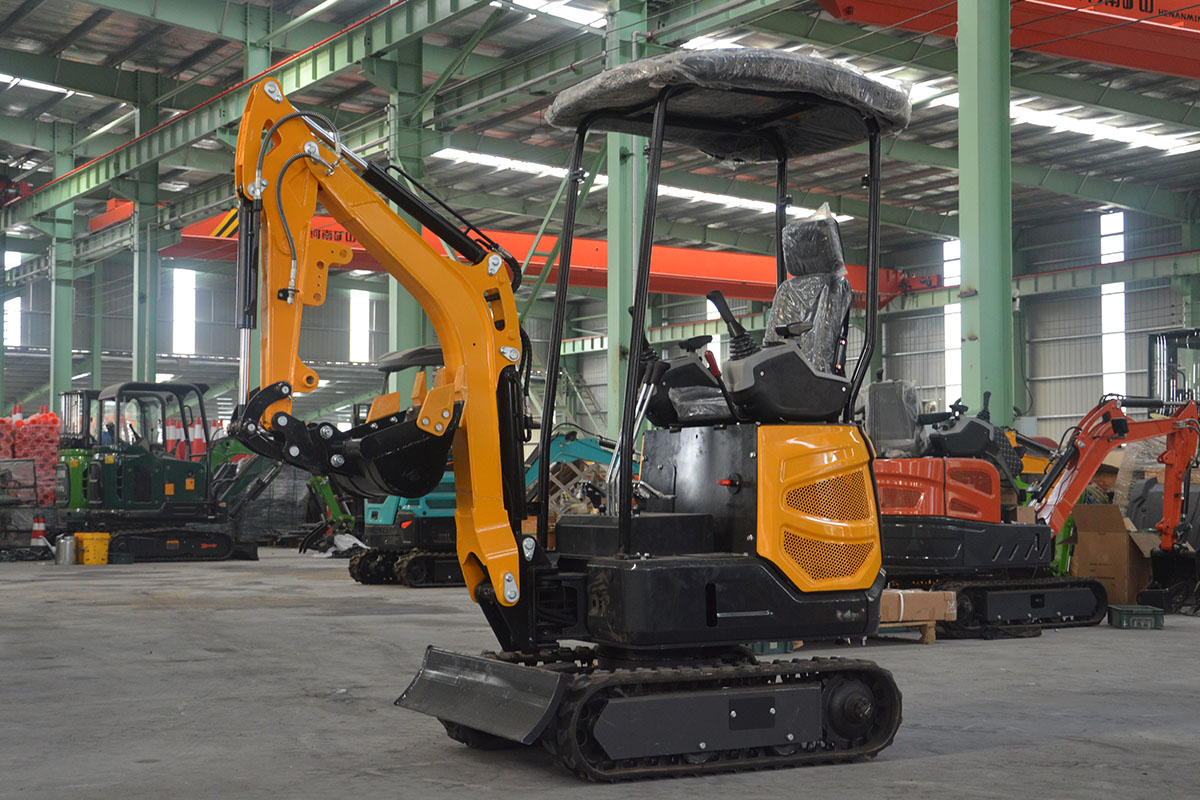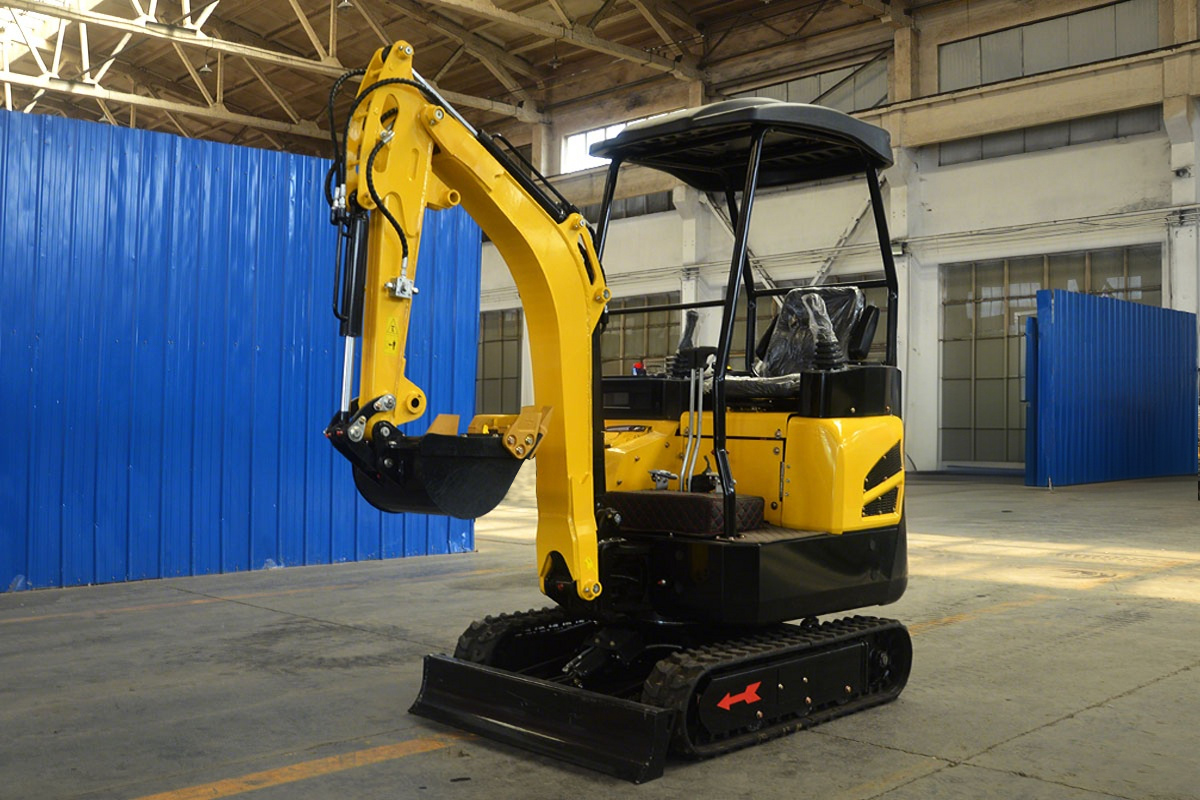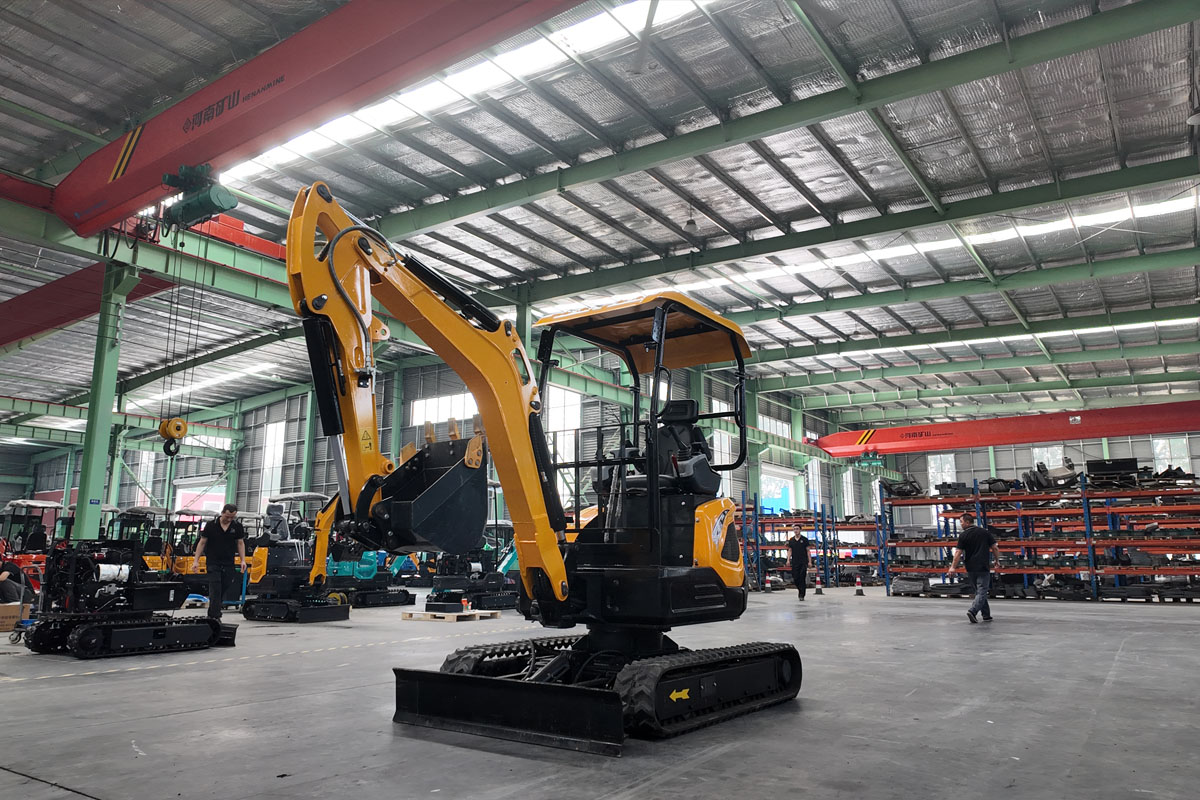In scenarios such as interior decoration, home renovations, agricultural cultivation, and municipal micro-projects, the GC-E08 to GC-E25 compact excavators have become the core equipment for customers tackling ‘difficult small jobs’ due to their flexibility, efficiency, and ease of operation. However, with multiple models available—including the GC-E08, GC-E10, GC-E12, GC-E15, GC-E18 (standard/tail-less versions), GC-E20, and GC-E25—how does one precisely match operational requirements? This guide combines the core strengths of the entire series, approaching selection through a four-dimensional lens: ‘Application Scenario - Model - Specifications - Configuration’—to provide you with a bespoke purchasing guide.
Step One: Select the model according to the scenario; each model has its own dedicated compatible scenario.
The GC-E08 to GC-E25 models encompass eight distinct variants, each engineered to address specific operational challenges, thereby avoiding the pitfalls of oversizing or undersizing:
Ultra-narrow space operations: GC-E08, GC-E10, GC-E12 — millimetre-level precision manoeuvring
GC-E08: Indoor / Ultra-Narrow Scenarios ‘Door-Passing Wonder’
Suitable Scenarios: Interior renovation demolition (e.g., stripping old walls, floor removal), basement pipe excavation (water pipes/cable trenches ≤30cm diameter), nursery plant transplanting (single root ball diameter ≤50cm).
Core Advantages: Body width of just 98cm, easily passes through standard doorways (90cm wide); minimum turning radius of 1.8 metres, capable of turning on the spot within stairwells; travel speed ≤0.5km/h in low-speed mode with millimetre-level precision; avoids damaging walls during root excavation; standard rubber tracks prevent scratching indoor tiles/wooden flooring.
GC-E10/GC-E12: Precision Operation ‘Upgraded Models’
Suitable Scenarios: Small pet shops / commercial premises renovations (e.g., foundation excavation for partition walls), complex terrain management in domestic gardens (e.g., excavation for rockery bases, small pond construction), small fertiliser trench digging in orchards (depth ≤60cm).
Core Advantages: 20% increased digging force compared to GC-E08 (reaching 10kN), 0.08m³ bucket capacity for handling light sandy-loam soils; 1.05m chassis width still passes through residential block entrances. Upgraded adjustable seat enhances comfort during extended operation, ideal for scenarios requiring ‘precision + moderate efficiency’.

Small to medium-sized multi-purpose operations: GC-E15, GC-E18 (Standard model / Tail-less model) — Combining flexibility with efficiency
GC-E15: The “Jack-of-All-Trades” for Small to Medium-Sized Applications
Suitable Applications:
- Tilling in vegetable greenhouses (width ≤ 8 metres)
- Rural path repairs (3-metre-wide surface levelling)
- Tree planting in residential green spaces (digging pits for trees with trunk diameters ≤ 15cm)
Core Advantages: Bucket capacity 0.06–0.12m³, paired with reinforced bucket teeth and 12kN digging force for efficient handling of both clay and loose soil; dual-pump combined hydraulic system reduces cycle time by 12% compared to the GC-E10 model, enabling 60m² of site levelling per day while maintaining low fuel consumption at 2.2L/h—balancing efficiency and economy.

GC-E18: Compact Engineering ‘Efficiency Edition’
Suitable Applications: Township-level municipal repairs (e.g., pavement tile refurbishment, small drainage well excavation), medium-sized orchard irrigation trench digging (depth ≤1.2 metres), small construction site foundation breaking (concrete thickness ≤10cm).
Core Advantages: Equipped with a 38kW China IV engine, maximum digging depth of 2.1 metres, bucket capacity 0.12–0.18m³, compatible with hydraulic breaker (impact force 28kN); Reinforced tracks (350mm width) prevent bogging in muddy terrain, achieving 90m³ daily earthmoving capacity. Ideal for tasks requiring ‘moderate efficiency + multi-condition adaptability’.

GC-E18T: The Ultimate Space-Saver for Tight Spaces
Suitable Applications: Renovation of stairwells in older residential buildings (operating within stairwells ≤2 metres wide), deep excavation indoors (e.g., breaking basement wall foundations), and demolition of equipment foundations in factory buildings (where surrounding obstacles exist).
Core Advantages: Features a tail-free swing design with a swing radius of just 1.6 metres. No components protrude beyond the machine body during rotation, enabling full 360-degree manoeuvring within 2-metre-wide spaces. Retains the standard GC-E18's digging force (13kN), resolving the common issues of ‘inability to turn or dig effectively in confined spaces’. This makes it the dedicated choice for large-scale indoor operations.

Medium-to-large-scale operations: GC-E20, GC-E25 tonnes — Exceptional power and stability
GC-E20: Medium-Duty ‘High-Efficiency Workhorse’
Suitable Applications: Small-scale farmland improvement (e.g., irrigation channel construction, width ≤1.5 metres), residential car park foundation excavation (depth ≤1.5 metres), municipal small-diameter pipeline laying (trench for pipes ≤50cm diameter).
Core Advantages: Maximum digging depth of 2.3 metres, bucket capacity 0.15–0.2m³, digging force 15kN, capable of handling lightly compacted sandy soil and hard earth. Upgraded intelligent fuel consumption monitoring system displays real-time energy usage to prevent wastage. Cab features a suspension seat and air conditioning for enhanced comfort during extended operations, suitable for daily working hours exceeding 6 hours.

GC-E25 Ton: Medium-to-Large-Scale Operations ‘Bridge Model’
Suitable Applications: Construction of small-scale township parks (e.g., foundation excavation for landscape lakes, footpath laying), medium-scale farmland levelling (plots ≤5 mu), auxiliary excavation for small bridge foundations (excavation depth ≤1.8 metres).
Core Advantages: Equipped with a 42kW China IV emissions-compliant engine, delivering 18kN breakout force and a bucket capacity of 0.18-0.22m³. Featuring 380mm track width for low ground pressure, it minimises bogging in soft farmland while reducing cycle times by 10% compared to the GC-E20 model. Capable of handling 110m³ of earthworks per day.

Step Two: Keep a close eye on three key parameters to avoid making the wrong choice.
After selecting the appropriate model, attention must be paid to key parameters that align with operational requirements. The following three categories of parameters directly impact performance:
1. Excavator digging force and attachment compatibility: Select according to material type.
Loose soil, planting soil: Select models with 10-13kN digging force, fitted with standard earthmoving buckets;
Clay, gravel: Select models with 15-18kN digging force, fitted with pointed-tooth buckets;
Concrete breaking, hard soil: Select models with 18-20kN digging force, compatible with hydraulic breakers;
Precision trenching for pipelines: Select models with bucket width ≤50cm, fitted with narrow buckets.
Note: All our models support customised attachments, accommodating log grapples, rippers, etc. as required.
2. Dimensions and Passability: Select by Space
Indoor / Stairwell Operations: Select models with a body width ≤1.1 metres and a turning radius ≤1.8 metres;
Field / Muddy Terrain: Select models with a track width ≥350mm and minimum ground clearance ≥160mm;
Transport Convenience: Select models with a transport height ≤2.3 metres.
Step Three: Focus on three categories of practical settings to enhance your working experience.
The right configuration can double your productivity. Below are the core configuration advantages of our driver-oriented model, which you may wish to prioritise when making your selection:
1. Operational configuration: Quick to master, even for novices
2. Safety and comfort features: Peace of mind during extended operations
3. After-sales service and warranty: Complete reassurance
Summary: Three steps to pinpoint the model that suits you
Scene selection: Initially filter models based on workspace (indoor/outdoor/extremely confined), material type (loose soil/hard soil/rubble), and daily operating duration.
Review specifications: Verify that digging force, machine dimensions, and power source align with requirements.
Select configuration: Choose based on operator proficiency and expected operating hours.
Review specifications: Verify that breakout force, machine dimensions, and power source align with operational requirements.